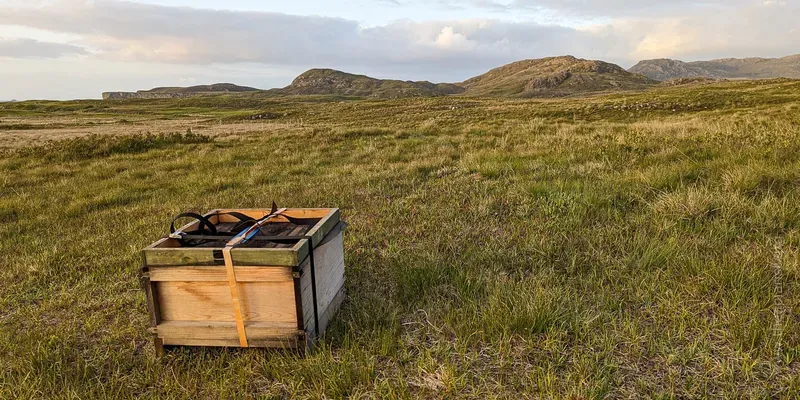Bees in the News - #3

Bees in the News was always supposed to be 'irregular ... at most monthly', to paraphrase the introduction to #2 which appeared back in early June.
I added the 'at most' in case I missed a month or more, though I always intended to write something each month. It looks as though I've just squeezed this edition into July before the month disappears in the rearview mirror.
Late summer is always a tricky time to try and write regularly (or irregularly) ... the end of the season is fast approaching and there's a lot to do in the apiary. Colonies are being requeened, others are being united, and there are towering stacks of supers that will soon need to be removed for the honey harvest.
There's even the vague hope that my poor West coast season might be saved by a reasonable heather crop, though that's currently looking doubtful 😞.
Table of contents
Varroa and DWV
The 'double whammy' of Varroa and deformed wing virus (DWV) is well-established in studies going back well over a decade.
DWV alone appears to not cause health problems for bees, though this is difficult to be absolutely certain about as the vast majority of honey bees appear to carry the virus. For example, Varroa-free colonies from islands off the west coast of Scotland have DWV, albeit at low levels.
Where DWV is reported as absent (for example, Australia, until the recent introduction of Varroa) the sensitivity of the assays used become really important. It's relatively easy to detect 100 million copies of the virus in a bee, but a lot more tricky to reproducibly and accurately quantify 1000 copies.
And the difference is important for two key reasons:
- low level infections, even in the presence of Varroa in the hive, are asymptomatic in individual bees.
- virus transmission by Varroa results in a million-fold (or more) amplification of virus levels, leading to symptomatic infection, disease and death.
So, even in the presence of very low DWV levels, the addition of Varroa leads to a rapid increase in virus levels, with devastating consequences for the health of individual bees and, if unchecked, the colony.
A recent study from Canada has re-confirmed the detrimental impact on honey bee health of the combined presence of DWV and Varroa.

I've provided the PMC reference, the original journal wants $22 to access the full paper!
In itself, not so surprising. A similar, albeit smaller-scale study, was published by Peter Neumann and colleagues way back in 2012 (Dainat et al., 2012).
During the Claing study, ~27% of colonies were lost overwinter, with the presence of Varroa a major contributing factor.
'Quelle surprise' as they might say in that part of Canada.
If you believe the annual surveys, that figure is not dissimilar to annual winter losses regularly reported in the UK and USA.
However, buried within the Cliang data, are two additional figures that highlight particular problems encountered by amateur beekeepers, and the importance of mite 'awareness' (and possibly management) during the summer months and before any autumn treatment.
